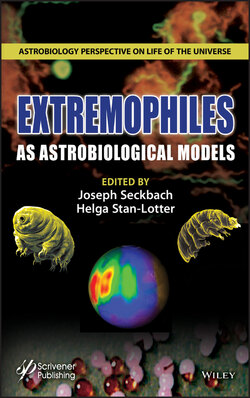Читать книгу EXTREMOPHILES as Astrobiological Models - Группа авторов - Страница 33
2
Rio Tinto: An Extreme Acidic Environmental Model of Astrobiological Interest
ОглавлениеRicardo Amils 1,2* and David Fernández-Remolar3,4
1 Centro de Astrobiología (CAB, CSIC-INTA), Torrejón de Ardoz, Spain
2 Centro de Biología Molecular Severo Ochoa (CBMSO, CSIC-UAM), Universidad Autónoma de Madrid, Madrid, Spain
3 State Key of Lunar and Planetary Sciences, Macau University of Science and Technology, Macau SAR, People’s Republic of China
4 CNSA Macau Center for Space Exploration and Science, Macau SAR, People´s Republic of China
Abstract
Among extremophiles, acidophiles are of special interest because their chemolithotrophic metabolism obtains energy from reduced minerals, thus creating the extreme acidic conditions in which they thrive. Rio Tinto is a 92 km long extreme acidic environment, which is the product of the metabolic activity of chemolithotrophic microorganisms thriving in the high concentration of metal sulfidic minerals existing in the Iberian Pyrite Belt. An extensive geomicrobiological characterization of the Tinto basin has proven the prominent role of the iron cycle in the ecosystem. The identification of iron sulfates and oxides on Mars, analogous to those generated in the Tinto basin by microbial metabolism, has made Rio Tinto one of the best geochemical and mineralogical terrestrial Mars analogues.
Keywords: Acidophiles, chemolithotrophy, pyrite, iron cycle, subsurface geomicrobiology, Mars, Meridiani Planum, methane
